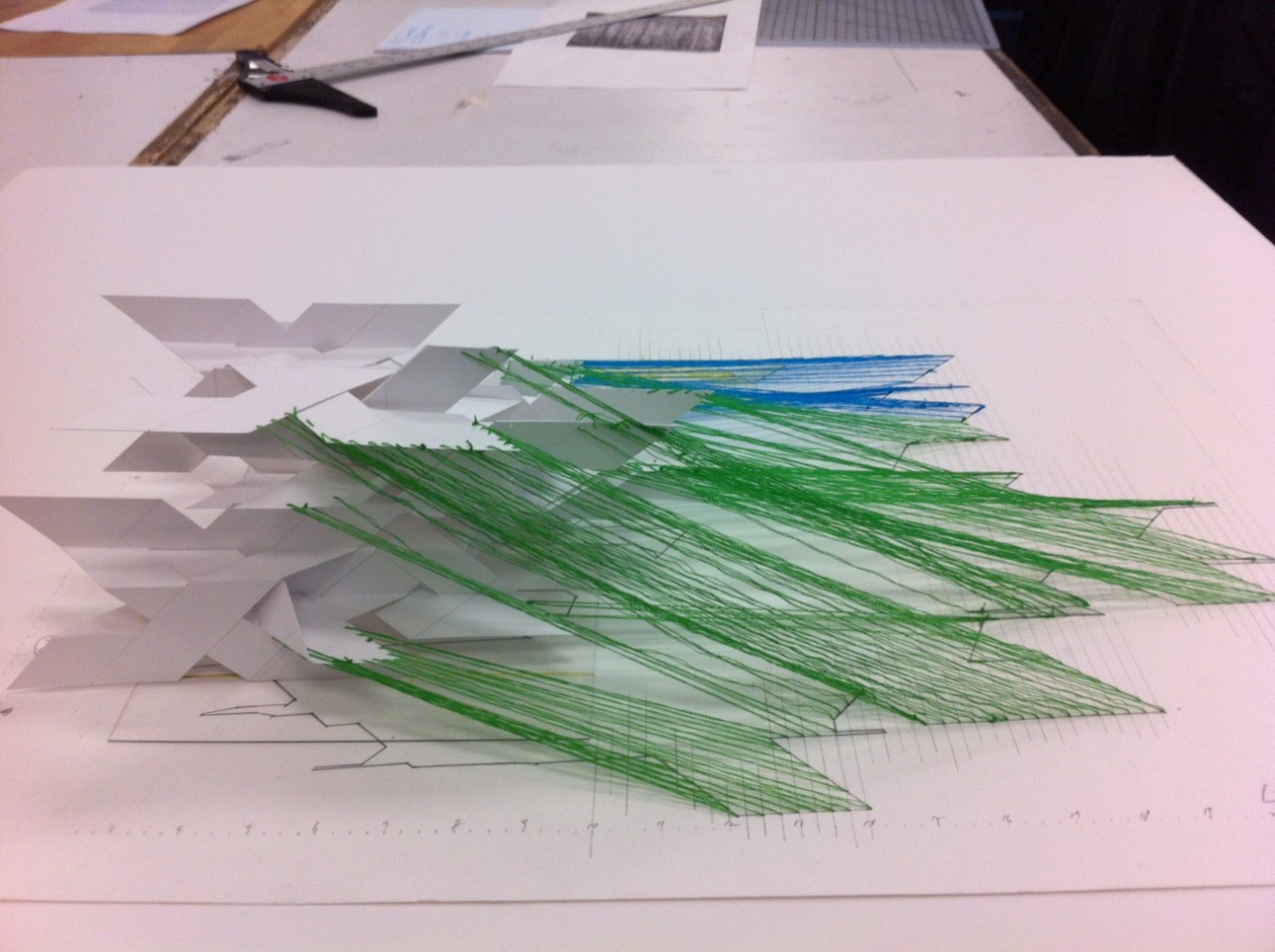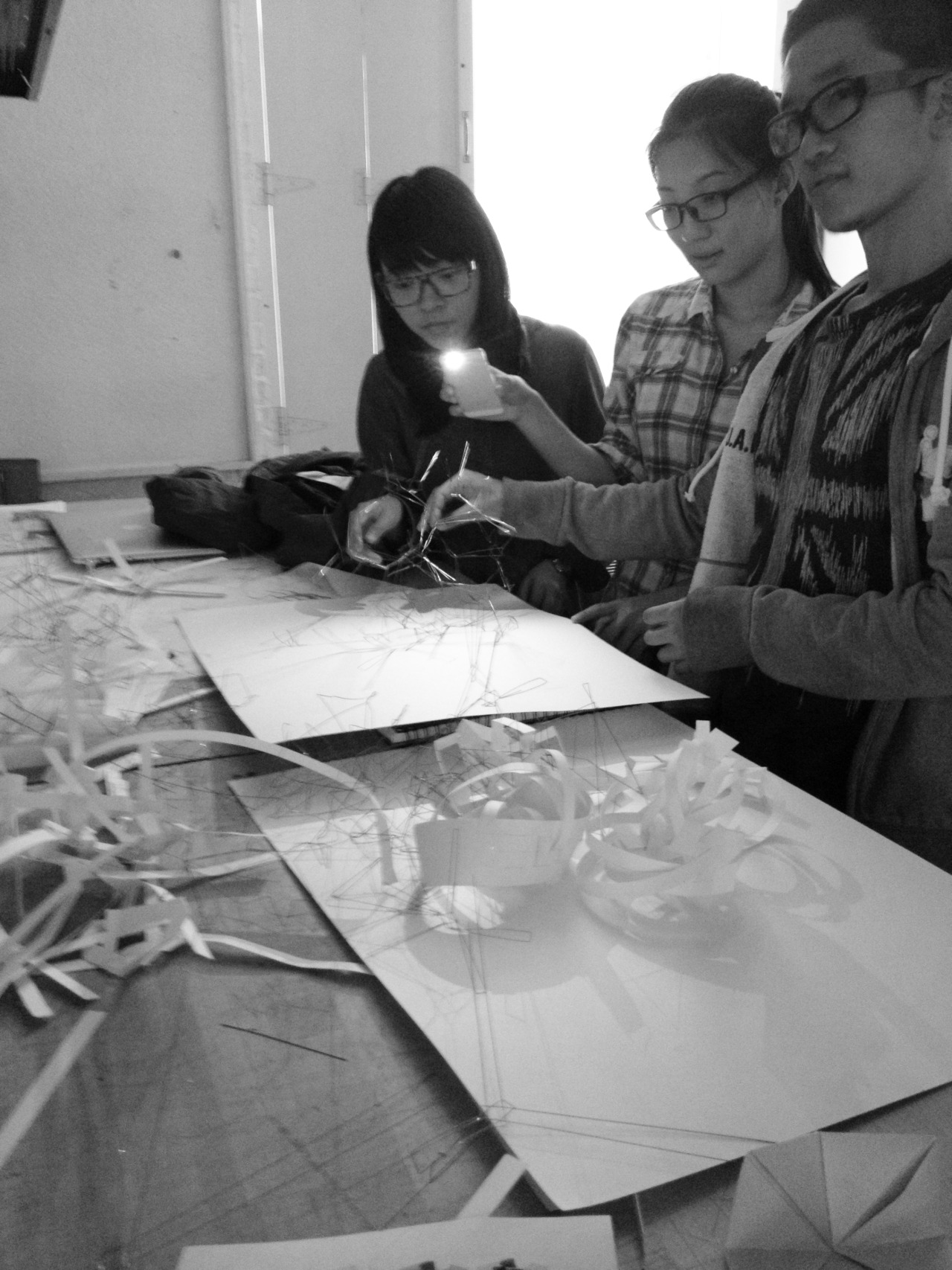Author: Adam E. Anderson
MLA Program at the Rhode Island School of Design
(Experiential Mapping, student drawing from Design Principles Studio at RISD)
As a former student (MLA II) and now adjunct faculty I wanted to share our new and in progress department website aimed to create a window into the life of the Masters Landscape Architecture program at the Rhode Island School of Design (RISD).
I came to RISD as an MLA II because of the unique opportunity it allowed me to explore other art and design disciplines through the lens of a Landscape Architect. I was able to take a Sound Studio in the Digital Media department that informed ideas about the spatial significance of sound in the landscape, a hybrid printmaking class allowed me to explore different means of representation in my landscape courses, and witnessed friends take courses in ceramics, textiles, and many others, transforming what they were making to spark new ideas into their landscape projects.
(Modeling shadow, student drawing and model)
This is the beauty of the landscape program at RISD, that landscape is not a concrete definition, but a strong foundation that is a flexible idea encouraging you to explore and define through your own unique pursuits.
I currently co-teach the Design Principles Studio, the first studio for all first year grad students. In short, the studio focuses on the process of critical making and exploring the dynamic, spatial, and environmental elements specific to the medium of landscape architecture. As a general framework for the studio, students complete a series of experiments that will help develop an expansive set of creative methods for investigating design issues. During the second phase of the studio, we use use these tools to analyze issues of site, qualities of landscape space, and finally, to deploy these methods to create and convey a design intention.
(Modeling shadow, Design Principles student model)
This studio is quite rigorous, and students are asked to make more physical models and drawings than perhaps they’ve ever done before. But the result is a substantial growth in design facility. Students coming out of Design Principles are able to apply what they’ve learned to a wide range of design problems, in a much faster and creative way.
(Students in Design Principles Studio)
I invite you to explore our new department website at www.risd-landscape.info and our Design Principles Studio blog at http://risddesignprinciples.tumblr.com/.
Also, should you have any questions about our program feel free to reach me at aanderso01@risd.edu.
Adam E. Anderson is a Critic in Landscape Architecture at the Rhode Island School of Design, a designer for Landworks Studio in Boston, and author/founder of Design Under Sky.
Becoming Aware
One of the greatest impacts the process of becoming a Landscape Architect has had on me is the way in which it’s made me “aware” of everything around me, and reminds me of a Boris Pasternak line from Doctor Zhivago:
Lara walked along the tracks following a path worn by pilgrims and then turned into the fields. Here she stopped and, closing her eyes,
took a deep breath of the flower-scented air of the broad expanse
around her. It was dearer to her than her kin, better than a lover,
wiser than a book. For a moment she rediscovered the purpose of her
life. She was here on earth to grasp the meaning of its wild
enchantment and to call each thing by its right name.
I notice cracks in sidewalks, oddly constructed corners, and all sorts of behavior of the living and built environment. On a recent stroll with a lady friend we walked and I pointed out the different varieties of flowering trees spring has afforded, and found joy in the fact that as she began to learn and “call each thing by its right name,” that she too was becoming aware.
That is the beauty of Brett Camper’s iphone app Trees Near You, which currently chronicles NYC trees, their locations, and not only environmental contributions, but economic. We’ve touched on merging factors of tech (here and here) and “nature” and how advancements in technology are becoming ubiquitous, and rather leading us away from nature, are re-introducing us to it.
The app which integrates with geo-location is the perfect, transportable system to not just learn the identification of trees, but better understand their role in an overall urban ecosystem. As the season’s turn you’ll no longer pass by, acknowledging them only as a spatial object, but they become personified as you notice the ever changing intricate characteristics provided by climate and season.
Currently the app is limited to the NYC area, but would imagine more cities are soon to follow.
Reading | Sketch Landscape
Via Design Under Sky
{Cover}
The final completion of any project is an amazing accomplishment in itself, considering the rigor of work, time, and bureaucratic hurdling that accompanies almost any significant landscape architecture project. For those outside the studio, we are presented with grandiose concepts, then see nothing until the landscape is eventually realized.
Sketch Landscape, is a visual narrative of the creative process of landscape architecture. The book is made up of 500 pages of scribbles, sketches, quick model prototypes, and multi-layered trace paper drawings giving insight to how some of the world’s most influential architect’s approach design.

(Landworks Studio. Court Square Garden Sketches)

{Landworks Studio. Court Square Garden Sketches}
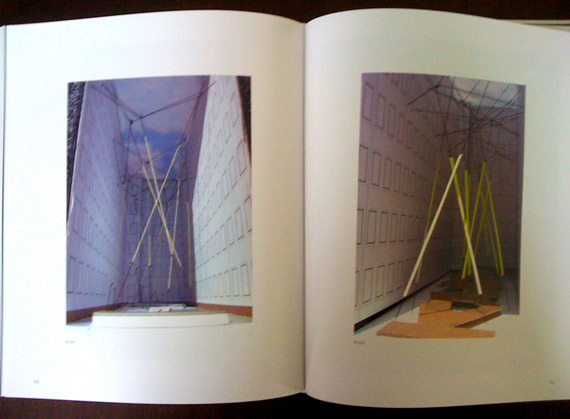
{Landworks Studio. Court Square Garden Model}
Though visually stimulating, I think the book is important because it shows that a design doesn’t come from one brilliant flash of the “a-ha” moment, but involves serious study and translation of spatial thoughts. It can be a intense process of fitting creativity into real-world influences, and the sketches shown communicate this.

{Acconci Studio. Mur Island sketches}
Just to give you a quick glimpse I took a couple rough snaps of some of my favorite projects and studios featured. Landworks Studio out of Boston, who I’ve mentioned here on DUS before takes us through their process of three of their projects: Court Square Garden, Crackle Garden, and Macallen Rooftop. Acconci Studio shows beautiful early concept sketches of Mur Island. And a young new studio NIPpaysage who is doing exciting work, illustrates projects Green Shift and Impluvium.

{NIPpaysage. Green Shift sketches}

{NIPpaysage. Green Shift sketches}
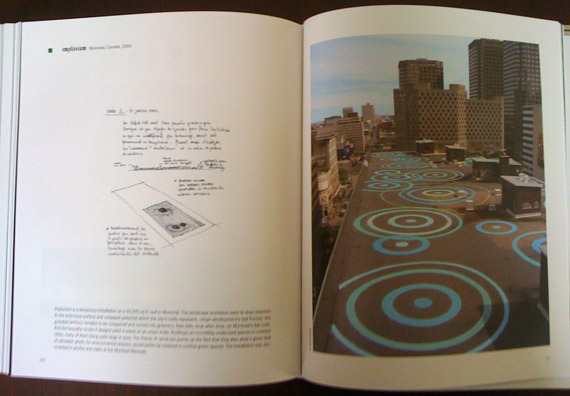
{NIPpaysage. Impluvium rendering and sketch}
Whether a veteran architect or a designer with an interest in landscape and it’s design process, I think you’ll find the book a resourceful piece of inspiration. A book, that will spend more of it’s time open on your desk then on a shelf.
via Design Under Sky
Planning on Visiting a California State Park this Summer? Think Again.
Adam E. Anderson
Design Under Sky
The budgetary woes of California is old news, and months and months of an unfinished budget debate between lawmakers and Gov. Schwarzenegger are digging a deeper hole for Californians. Just recently however the proposed budget that’s now pushing for approval is one that will effectively terminate funding for California State Parks, closing 220 parks up and down the Golden State (59 will remain open).
As anyone who’s visited one these parks, especially in the summertime, one can attest to their popularity as you’re rarely afforded the opportunity to experience one alone. I can only imagine the effect that the closing of so many will have on the impact of so few. More visitors filtered to the remaining inevitably means more degradation, more trash, and less serenity.
Part of me is willing to temporarily turn the other way given the economic crisis we’re in. Unfortunately, because of the fiscal mistakes of some sacrifices will have to come from somewhere. But, again I think lawmakers underestimate the necessity of parks, especially for overcrowded SoCal. And can just imagine the road rage of hundreds of over-sized truck owners when urban stresses cannot be relinquished with weekend park retreats.
The California State Parks Foundation quickly declared a Save Our State Parks Weekend (also known as the more urgent SOS Weekend) which will happen statewide June 20 to June 21. During this weekend, the campaign asks citizens to visit a park and take photos of themselves, and to wear green ribbons in show of solidarity. Save Our State Parks is compiling stories about state parks and calling for mobilization through its Facebook page, when I last checked already had over 31,000 fans.
One of the most notable parks set to close is the Los Angeles Historic State Park. One of the newest parks in the state system, these 32 acres are referred to as “the Cornfield” by locals due to a large-scale artwork by Lauren Bon that planted this former railyard with corn. After drawing awareness to the area, a park was designed by the competition-winning Hargreaves Associates to create a recreation area in this greenspace-deprived neighborhood.
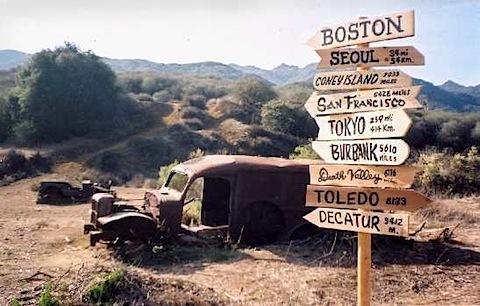
{Malibu Creek State Park}
Another unfortunate closing would be the Malibu Creek State Park. The trails of this mountainous park northwest of Los Angeles wind through canyons, over mountains with stunning rock formations, and along the 25-mile long Malibu Creek. But the park is perhaps best known as the location for many Hollywood productions, including the TV show M*A*S*H, which left behind plenty of its vintage war vehicles.
If you’d like your voice heard you can go the California State Park Foundation website for links to petitions and their facebook page.
The Remotest Places on Earth
{Image via New Scientist}
On April 18th 2009, the New Scientist published an article on a remarkable project developed by researchers at the European Commission’s Joint Research Centre in Ispra, Italy, and the World Bank. The authors combined a series of maps to create a new map of connectedness showing the most interconnected and remote places on earth.
The maps are based on a model which calculated how long it would take to travel to the nearest city of 50,000 or more people by land or water. The model combines information on terrain and access to road, rail and river networks. It also considers how factors such as altitude, steepness of terrain and hold-ups like border crossings slow travel.

{Image via New Scientist}
Plotted onto a map, the results throw up surprises. First, less than 10 per cent of the world’s land is more than 48 hours of ground-based travel from the nearest city. What’s more, many areas considered remote and inaccessible are not as far from civilisation as you might think. In the Amazon, for example, extensive river networks and an increasing number of roads mean that only 20 per cent of the land is more than two days from a city – around the same proportion as Canada’s Quebec province.
The maps were created to show how the distribution of people affects their access to resources such as education and medical care, and how we are increasingly pushing wildlife out of even the wildest corners of our planet.
The first image shows the final map of connectedness while the second image shows a zoomed view over the world’s most remote place: the Tibetan plateau. From here, says Andy Nelson, a former researcher at the European Commission, it is a three-week trip to the cities of Lhasa or Korla – one day by car and the remaining 20 on foot. Rough terrain and an altitude of 5200 metres make this the most secluded place on earth.
McHarg’s Design with Nature Revisited
I have to admit my first attempt to read Ian McHarg’s Design with Nature while in school was haphazard to say the least. But there was drinking, tomfoolery to be had, and skirts to chase, what concern did I have with the environment and my impact on it as a designer.
Well now that I’m older, wiser, and MUCH more mature (pronounced MU-T-OOR) I’ve been revisiting icons of landscape architecture literature. After reading Design with Nature I felt an immediate connection to McHarg’s belief’s and amazed by his teachings, written in 1969, are the very principles which some landscape architects today hale as “New Trends” in landscape architecture known as sustainable design. Well it’s certainly not new, and isn’t sustainable design synonymous with the practice of landscape architecture? Its unfortunate that some of us our having to re-adapt our practices to the concepts of design with nature due to climatic and market driven necessities. But regardless of the motives, it’s a positive adaptation and one I think McHarg would approve.
Growing up in Glasgow McHarg experienced serenity in the natural environments of the Scottish countryside. After returning from soldiering in the British Parachute Brigade in Italy during WW II, he returned to Glasgow to find it different as he remembered, his natural playgrounds now replaced by the stark effects of industrialization. It was then McHarg began his commitment to bringing the natural serenity he found as a child to the city.
A natural dissident, McHarg wrote what many consider to be the ecological design classic in a very personal, very untextbook-like style. A native genius, he refuses to be constrained by traditional categories that separate self from others, civilization from ecology. It is this very personal touch that keeps Design With Nature as essential to any landscape architects library forty years after its inception. No one expresses the essence of his work better than McHarg himself:
“This book is a personal testament to the power of sun, moon, and stars, the changing seasons, seedtime and harvest, clouds, rain and rivers, the oceans and the forests, the creatures and the herbs. They are with us now, co-tenants of the phenomenal universe, participating in that timeless yearning that is evolution, vivid expressions of time past, essential partners in survival and with us now involved in the creation of the future.
Our eyes do not divide us from the world, but unite us with it. Let this be known to be true. Let us then abandon the simplicity of separation and give unity its due. Let us abandon the self mutilation which has been our way and give expression to the potential harmony of man-nature. The world is abundant, we require only a deference born of understanding to fulfill man’s promise. Man is that uniquely conscious creature who can perceive and express. He must become the steward of the biosphere. To do this he must design with nature.”
McHarg’s book might be criticized from a modern perspective. Design with Nature does not describe complete cyclical ecology and focuses mostly on patterns of land use and the transitions of human settlements. This may be a cause of the time which it was written; suburban sprawl was seen by many as the principal threat to the natural environment in the late 1960’s. As did many of his contemporaries, including Frank Lloyd Wright, McHarg views the automobile as a permanent fixture, and discusses how highways can be better situated in the landscape, not eliminated or scaled back.
Design with Nature does not aspire to be a textbook of ecological design as way we currently understand the field. As a book of preservation and the reintroduction of nature back into the city, you might not find a better a better replacement. I strongly encourage those who have yet to read it to pick up a copy, and if you have and it’s been a while, dust it off for another go.
Looking for other great resources for your design library?
Head over to our resource section where we have curated a collection of essential Landscape Architecture Books >>
Review by Adam E. Anderson, LEED AP
www.designundersky.com
Spatial Artifacts: Eckbo Uncovered
{Bay Lido Building Pocket Park, 1958, Garrett Eckbo. Apologies for the poor quality. Image Via: Modern Landscape for Living}
Friend, neighbor, fellow OSU alum, and landscape architect Kevin Newrones, while reading Modern Landscapes for Living, realized that one of the photos featured in the book was a 1958 Garrett Eckbo pocket park that stood just up the road from our homes.
In general, the notoriety of acclaimed landscape architecture projects are typically limited to that of our own kind, and even in that regard, we are, at least I certainly am, capable of standing in a space designed by one of the greats and would not necessarily notice.
Inspired by a trip to Boston, in which another LA friend had extensively mapped out all the landscape architectural nodes of significance. A map which I’m still perplexed by it’s intricate historical expanse, included virtually unknown pocket parks designed by Olmsted. How the kid finds these things I still don’t know, but I was excited to contribute to uncovering my own hidden space of reputable design.
Tucked neatly just between the Lido Bridge and the Elks Lodge in Newport Beach CA, is a small bayfront promenade designed by Eckbo in 1958. Although the original detailed hardscape no longer remains, in classic Eckbo form, the aged park still possesses the diagonal to coalesce natural and geometric form and provides tension, direction, and dynamic quality. Eckbo’s modernist approach devised a new axiality, a new geometry without symmetry but with balanced structure in order and space.

{Eckbo’s Bay Lido Pocket Park Today, 2009 Newport Beach CA}

{Eckbo’s Bay Lido Pocket Park Today, 2009 Newport Beach CA}
Saddened by it’s dilapidated state, I plan on contacting the city to spark interest in a restoration project, although given Newport Beach’s ineffectual bureaucratic reputation, I’m not getting my hopes up.
I have to wonder how many spaces I’ve traversed through completely unaware of it’s infamous creator. And how many of these landscapes fade and are submerged and covered by encroaching and morphing infrastructure. I suppose its a bit romantic to envision such spaces as living organisms, whose lives last as long as the spirit and people for which they were designed. Are we justified in restoring them, or should we let them go peacefully?
If you have a similar happening I’d love to hear it, and if you know of a surviving significant landscape in jeopardy please contact the Cultural Landscape Foundation.






